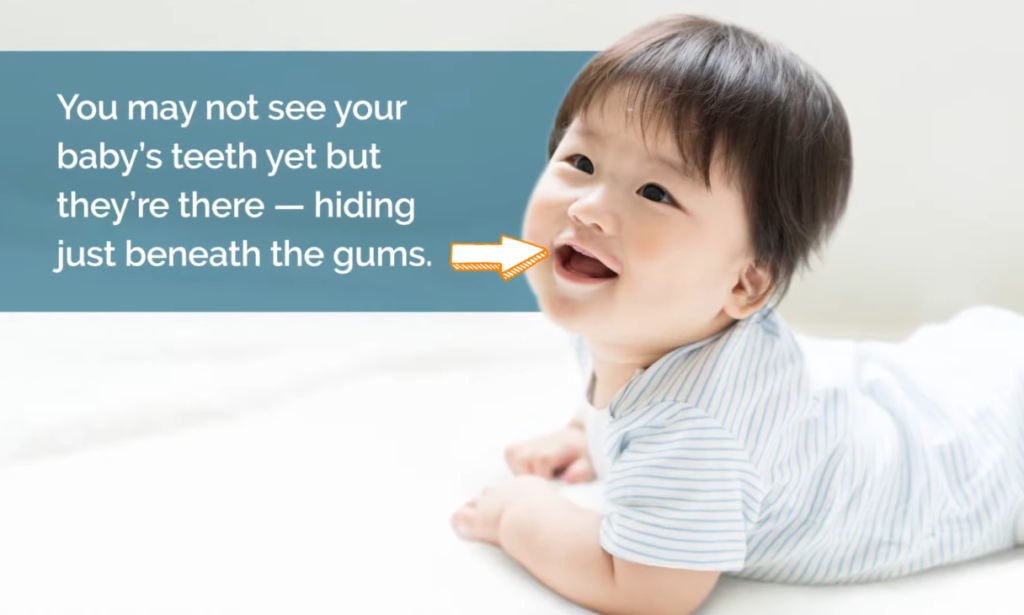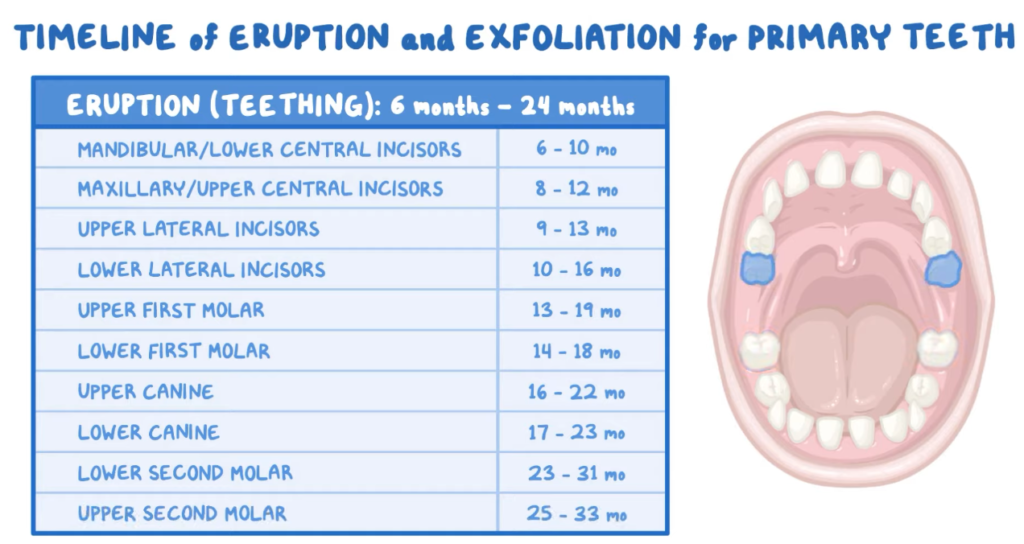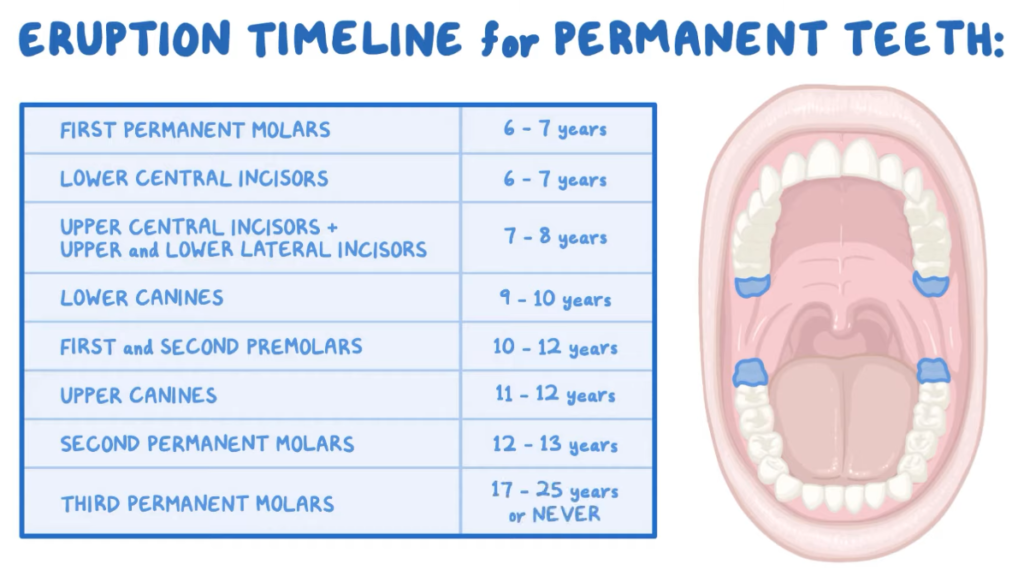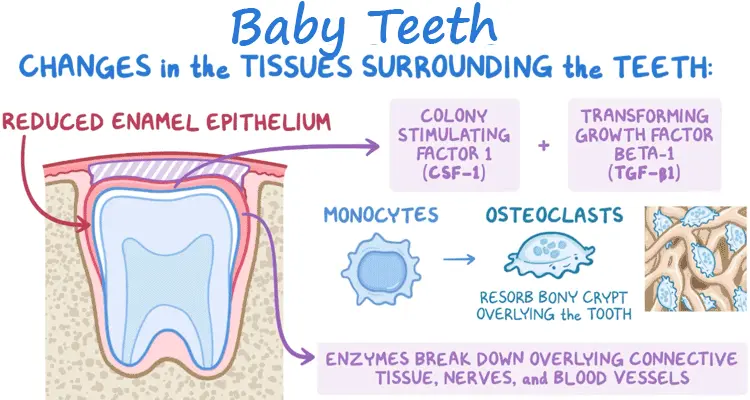Welcome to the wonderful world of baby teeth! As a dentist, I understand the excitement (and sometimes anxiety) parents experience when their little ones embark on this journey. This guide will equip you with all the essential knowledge about baby teeth, from their arrival to their departure, ensuring a smooth and healthy experience for your child.
The Mighty 20: A Set of Champions
Children are born with 20 baby teeth, also known as primary teeth or deciduous teeth, waiting under their gums at birth. Teething, the process of these teeth breaking through the gums, typically begins around 6 months old. By age 2 or 3, most children will have all their baby teeth. These little champions play a crucial role in a child’s development long before the arrival of their permanent smile.

- Nutrition: Baby teeth help children chew and break down food, allowing for proper nutrition and growth.
- Speech Development: They play a vital role in speech development, aiding in the formation of sounds and clear pronunciation.
- Jawbone Development: Baby teeth act as placeholders, guiding the eruption of permanent teeth by maintaining space in the jawbone.
- Facial Aesthetics: A healthy set of baby teeth contributes to a child’s facial structure and aesthetics.
The Grand Adventure: Eruption Timeline
The eruption of baby teeth typically follows a predictable pattern, although variations are normal. Here’s a general timeline to keep in mind:
- 6-10 Months: The lower central incisors (front teeth) are often the first to peek through.
- 8-12 Months: The upper central incisors join the party.
- 12-16 Months: Lateral incisors (teeth next to the central incisors) erupt both on top and bottom.
- 16-20 Months: Canines (pointed teeth) emerge.
- 1 year to 3 years: The first molars (back teeth) make their appearance.
- 2 ½ to 3 years: The second molars complete the set of 20 baby teeth.

Teething Troubles: Soothing the Discomfort
Teething can be an uncomfortable time for babies, with symptoms like fussiness, drooling, and sore gums. Here are some tips to soothe your little one:
- Teethers: Chilled teethers provide a safe surface for gnawing and alleviate discomfort.
- Gum Massage: Gently massaging the gums with a clean finger can offer relief.
- Cool Washcloth: A cool, damp washcloth can be soothing on sore gums.
- Over-the-counter pain relievers: Consult your pediatrician for age-appropriate pain relief medication if needed.
Baby Teeth TLC: A Guide to Proper Care
Just like permanent teeth, baby teeth require proper care to prevent decay and ensure healthy development. Here’s how to establish a good oral hygiene routine for your child:
- Start Early: Even before the first tooth erupts, wipe your baby’s gums with a clean, damp washcloth after feedings.
- Brushing Basics: Once teeth erupt, use a soft-bristled infant toothbrush and a smear of fluoride toothpaste (no larger than a grain of rice) to brush twice a day.
- Parental Assistance: Supervise brushing until your child reaches around age 8, ensuring thorough cleaning.
- Flossing Fun: Flossing becomes necessary once teeth start crowding together, typically around age 2-3. Use a gentle flossing technique to clean between teeth.
- Regular Dental Visits: Establish dental checkups by the first birthday or when the first tooth erupts, whichever comes first.
Common Baby Teeth Problems and Solutions
While baby teeth are temporary, their proper care and maintenance are crucial. Here are some common problems associated with baby teeth and their respective solutions:
Tooth Decay
Tooth decay, or cavities, is one of the most prevalent dental problems in children. It can be caused by excessive sugar consumption, poor oral hygiene, or a combination of factors. To prevent tooth decay, encourage good oral hygiene habits, limit sugary foods and drinks, and schedule regular dental check-ups.
Tooth Discoloration
Baby teeth can become discolored due to various reasons, such as excessive fluoride exposure, medications, or trauma. While discoloration may be harmless, it’s essential to identify and address the underlying cause. Seek professional advice from a pediatric dentist.
Tooth Sensitivity
Tooth sensitivity can be caused by tooth decay, enamel erosion, or traumatic injuries. Identifying and treating the root cause is crucial. In the meantime, using desensitizing toothpaste and avoiding extreme temperatures can provide temporary relief.
Thumb-sucking and Pacifier Use
Prolonged thumb-sucking or pacifier use can lead to misalignment of baby teeth and potentially affect the development of permanent teeth. If the habit persists beyond the age of 3, consult a dentist for appropriate intervention strategies.
Tooth Injury or Trauma
Accidents or falls can result in chipped, cracked, or knocked-out baby teeth. While these teeth are temporary, prompt treatment is essential to prevent infection and ensure proper development of permanent teeth.
Baby Teeth Problems: When to Seek Professional Help
While some variations in eruption timing are normal, certain situations require professional attention. Here are some signs to watch for:
- Delayed Eruption: If no teeth erupt by age 18 months, consult your dentist to rule out any underlying issues.
- Prolonged Teething Discomfort: If teething troubles persist beyond a few days or seem excessive, consult your dentist.
- Uneven Spacing: While minor gaps are normal, significant spacing or crowding might indicate future orthodontic concerns.
- Trauma or Damage: If a baby tooth experiences a chip, crack, or gets knocked out, a dental visit is crucial.
- Signs of Infection: Symptoms like redness, swelling, or persistent pain around a tooth could indicate an infection.
Beyond the Basics: Addressing Common Concerns
Baby Teeth X-rays
X-rays are typically not needed for routine baby teeth monitoring but may be used in specific cases to assess development, diagnose problems, or plan treatment.
Late Eruption
Several factors can contribute to delayed eruption, such as genetics, nutritional deficiencies, or underlying medical conditions. Your dentist can investigate the cause and recommend an appropriate course of action.
Baby Teeth Falling Out
The natural shedding of baby teeth typically begins around age 6 and continues until around age 12. The order of baby teeth falling out generally follows the reverse order of eruption:
- Lower central incisors (front teeth)
- Upper central incisors
- Lateral incisors (teeth next to the central incisors)
- Canines (pointed teeth)
- First molars (back teeth)
- Second molars
It’s important to note that this is a general guideline, and variations in timing are common. Don’t be alarmed if your child’s teeth fall out in a slightly different order.
What to Do When a Tooth Gets Wiggly:
- Leave it Alone: Avoid pulling or wiggling the tooth yourself. The root will naturally dissolve, causing the tooth to loosen and eventually fall out on its own.
- Offer Soft Foods: As the tooth loosens, provide softer foods that are easier to chew.
- Pain Relief: Over-the-counter pain relievers can be used for mild discomfort associated with a loose tooth.
Interesting Facts About Baby Teeth
- Baby teeth are not as strong as permanent teeth. They have thinner enamel, making them more susceptible to decay.
- Not all mammals get baby teeth. Animals like kangaroos and dolphins never develop a first set of teeth.
- Some research suggests that stem cells from baby teeth might hold future promise in regenerative medicine. However, more research is needed in this area.

Baby Teeth Vs. Permanent Teeth: Key Differences
| Feature | Baby Teeth | Permanent Teeth |
| Size and Shape | Smaller and simpler shapes (incisors, canines, molars) | More complex shapes (incisors, canines, premolars, molars) |
| Number | 20 teeth | 32 teeth |
| Root Structure | Shorter roots that dissolve to allow permanent teeth to erupt | Longer, stronger roots that anchor them in the jawbone |
| Durability | Temporary | Designed to last a lifetime with proper care |
So Long, Baby Teeth! Hello, Bright Smile!
Losing baby teeth is a thrilling milestone for children, marking their journey towards a mature smile. By understanding this process and providing proper care, you can ensure your child has a healthy foundation for their permanent teeth. Remember, regular dental visits and good oral hygiene habits are essential for a lifetime of healthy smiles.
Additional Resources:
American Academy of Pediatric Dentistry: https://www.aapd.org/
National Institute of Dental and Craniofacial Research: https://www.nidcr.nih.gov/
I hope this comprehensive guide empowers you to navigate the world of baby teeth with confidence!


